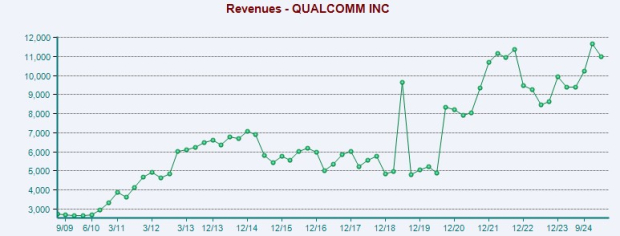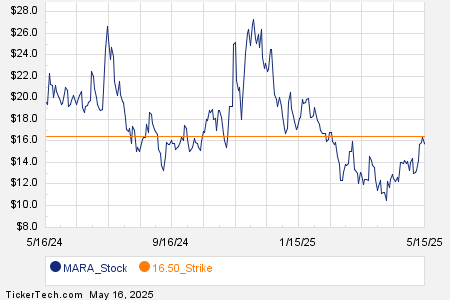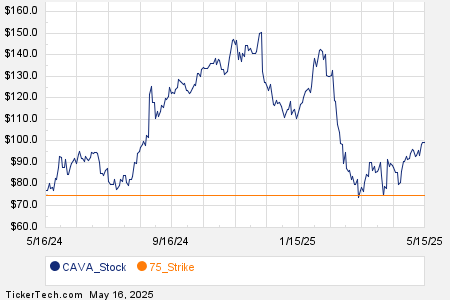Qualcomm Launches Snapdragon 7 Gen 4, Enhances AI and Gaming Features
Qualcomm Technologies, Inc. (QCOM) has recently unveiled the Snapdragon 7 Gen 4 Mobile Platform, showcasing significant advancements in its technology. Notably, the new platform boasts a 65% enhancement in artificial intelligence (AI) performance, enabling smarter support for large language models and generative AI. Additionally, a 30% faster GPU rendering enhances gameplay with improved frame rates and smoother visual experiences. To further elevate the gaming trajectory, Qualcomm has integrated Snapdragon Elite Gaming features, along with a 27% boost in CPU performance for improved multitasking and system responsiveness.
In line with these developments, Qualcomm has been working with leading smartphone manufacturers to customize solutions that best suit their needs. The Snapdragon 7 Gen 4 Mobile Platform is already gaining traction, with major original equipment manufacturers (OEMs) like HONOR and vivo selecting it for impending device releases. Realme is also anticipated to adopt this new platform soon.
The platform introduces advanced multimedia capabilities, including video super resolution, hardware electronic image stabilization, and sophisticated image processing. Furthermore, it supports 3GPP Release 17 for 5G connectivity, as well as WiFi 7 and Bluetooth 6.0. The inclusion of Snapdragon Sound technology promises enhanced wireless audio quality, emphasizing superior connectivity.
Qualcomm’s Strategic Focus on AI and Portfolio Expansion
Qualcomm’s commitment to the burgeoning AI sector remains strong. The introduction of the Snapdragon X chip for mid-range AI desktops and laptops marks a pivotal step. This chip features an 8-core Oryon central processor, a graphics component, and a neural processing unit (NPU) capable of executing 45 trillion operations per second (TOPS). This positions Qualcomm well in supporting AI-enriched PCs, aligning with Microsoft’s vision for AI-first Windows hardware.
Saudi Arabia is investing aggressively in AI and 5G technologies as part of its Vision 2030 initiative, positioning Qualcomm as a pivotal player. Collaborations with HUMAIN aim to establish AI data centers for hybrid cloud-edge solutions. Qualcomm also partners with Aramco Digital to enhance advanced edge AI for industrial IoT devices. In the automotive sector, revenues surged 59% to $959 million in the second quarter of fiscal 2025, reflecting increased content in new vehicle launches featuring the Snapdragon Digital Chassis platform.
These advancements indicate Qualcomm’s strategy to diversify beyond smartphones, entering high-growth markets such as AI for PCs, data centers, automotive applications, and edge AI technologies. This continual innovation and portfolio diversification is likely to enhance its commercial prospects.
Challenges Facing Qualcomm
However, Qualcomm faces formidable challenges. Major customers like Samsung and Apple, Inc. (AAPL) are pivoting toward in-house chip development. Samsung has launched several Exynos chips utilized across various smartphone tiers, while Apple has rolled out chips for its devices, including the A18 Pro for the iPhone 16 Pro series and a proprietary C1 modem, replacing Qualcomm’s modem in the iPhone 16e. Such shifts raise concerns for Qualcomm’s market share.
Additionally, the company contends with strong competition from MediaTek in the mid-range smartphone sector. In the networking sphere, Qualcomm faces challenges from Broadcom Inc. (AVGO), while Intel Corporation (INTC) continues to dominate the PC market. Innovative products like the Intel Core Ultra 200V series processors are gaining traction in the AI PC landscape. Despite Qualcomm’s advancements with Snapdragon X Elite and X Plus processors, achieving compatibility with existing software akin to Intel’s offerings represents a significant hurdle.
Qualcomm also maintains a substantial presence in China, making it vulnerable to trade tensions between the U.S. and China. Recent negotiations have temporarily eased tariffs, but unresolved issues could reinstate them, negatively impacting Qualcomm’s operating margins.
Stock Performance Overview
Over the past year, QCOM shares have decreased by 21%, contrasting with a 20.7% industry growth. While the company has outperformed Intel, it has not matched Broadcom’s performance; Intel’s shares have fallen 32.7%, and Broadcom’s have surged 64.7%.
Estimate Revision Trends for QCOM
Over the last 60 days, earnings estimates for 2025 have climbed 0.34% to $11.80, while those for 2026 have decreased 1.85% to $12.21. This reflects mixed investor sentiment regarding Qualcomm’s growth potential.
Conclusion
Qualcomm aims to play a crucial role in the evolving landscape of AI innovations. The company’s strategy to expand beyond the mobile chipset market represents a significant move. By focusing on diverse sectors such as automotive, industrial IoT, data centers, and edge AI, Qualcomm seeks new revenue streams while cementing its position in mobile chipsets.
Nevertheless, aggressive competition in the smartphone chipset market and client strategies toward in-house chip development pose risks for Qualcomm’s profitability. Heightened exposure to a fluctuating Chinese market is another concern. Currently holding a Zacks Rank #3 (Hold), Qualcomm’s outlook suggests that investors should proceed with caution.




